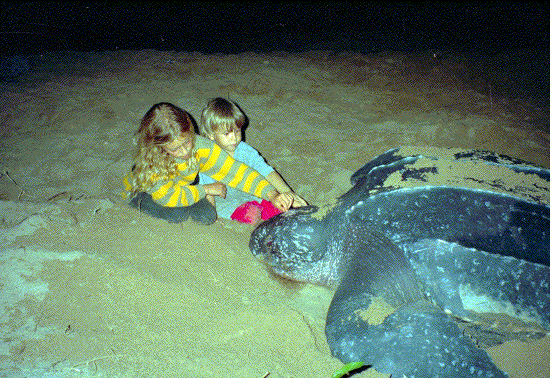Biodiversity
In recent years, wildlife tourism has experienced a rapid growth worldwide. An increased interest in wildlife viewing has given rise to a wide range of wildlife tourism products to cater for this growing demand. As is evident from the numerous commercial dolphin and whale watching ventures appearing worldwide the marine environment lends itself well to this type of tourism. The dramatic increase in popularity of wildlife tourism has also created a market for interactive experiences such as dolphin feeding and dolphin swimming initiatives. The potential economic benefits of the development of such programmes are considerable, but the associated impacts on wildlife might be terrible, causing marked changes in behavioural and social ecology leading to reduced fitness and higher levels of mortality.
 Threats to sea turtle populations have been increasing in recent years as a result of human activities. Turtle based tourism viewing can generate income and income and provide employment whilst at the same time support the conservation efforts of sea turtles. Though turtles (and their eggs) are still harvested in many countries for their meat, shell and many by-products these direct threats mainly stem from local populations ' turtle meat and eggs still form an important part of the diet of many native communities around Australia- rather than tourists. The destruction of coastal beaches due to erosion, resort development and recreation has deprived turtles of quality nesting grounds. Though sea turtle based tourism may constitute one of the best tools towards the reptile's protection it has the potential o adversely affect the animals as a result of human disturbances, infrastructural development and pollution arising from such tourism.
Threats to sea turtle populations have been increasing in recent years as a result of human activities. Turtle based tourism viewing can generate income and income and provide employment whilst at the same time support the conservation efforts of sea turtles. Though turtles (and their eggs) are still harvested in many countries for their meat, shell and many by-products these direct threats mainly stem from local populations ' turtle meat and eggs still form an important part of the diet of many native communities around Australia- rather than tourists. The destruction of coastal beaches due to erosion, resort development and recreation has deprived turtles of quality nesting grounds. Though sea turtle based tourism may constitute one of the best tools towards the reptile's protection it has the potential o adversely affect the animals as a result of human disturbances, infrastructural development and pollution arising from such tourism.Picture courtesy of Topham.
Pollution, an unfortunate by-product of tourism, can cause harmful chemicals or wastes to be introduced into animal habitats leading not only to habitat deterioration but also to poorer animal health or death. A review of the threats of marine debris to marine wildlife indicates that at least 267 species of marine wildlife are affected by rubbish. Animals are regularly injured or killed due to entanglement or ingestion of waste material such as plastic objects. Entanglement can cause reduced foraging ability, reduced predator resistance, exhaustion, infection from injury, and unnatural behaviours leading to a competitive disadvantage. Ingestion of solid waste can bring about irritation and damage to the digestive tract as well as disruption of normal feeding patterns. An obvious increase in the use of inshore waters by boats has resulted in a rise in the number of collisions reported. Dead dolphins washed up on the shore sometimes display evidence of injury from boat propellers.

